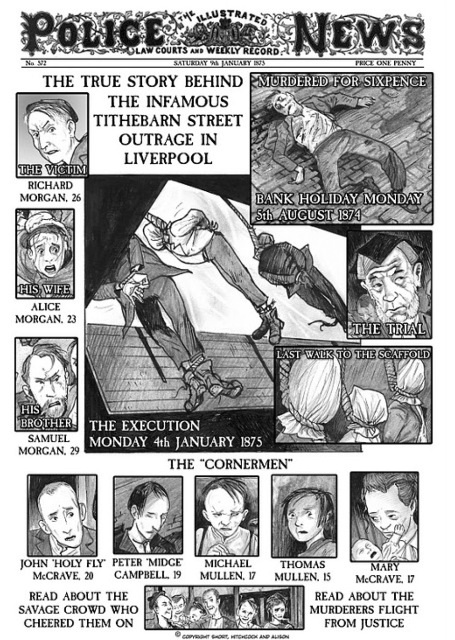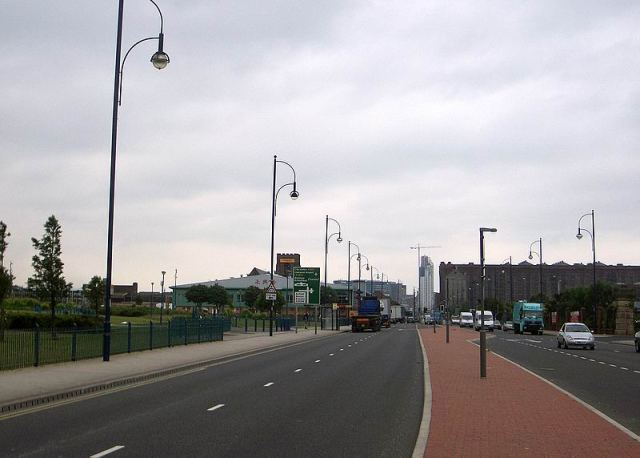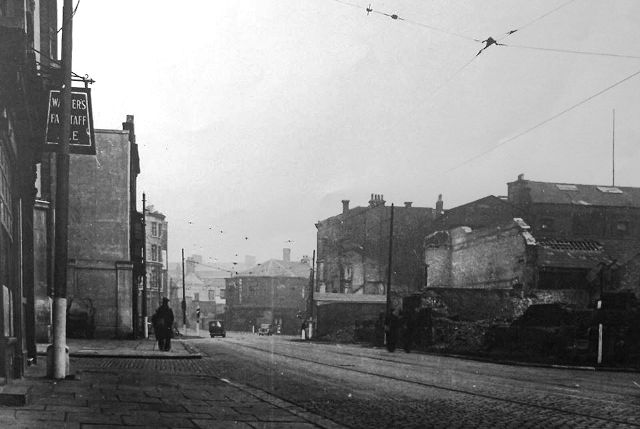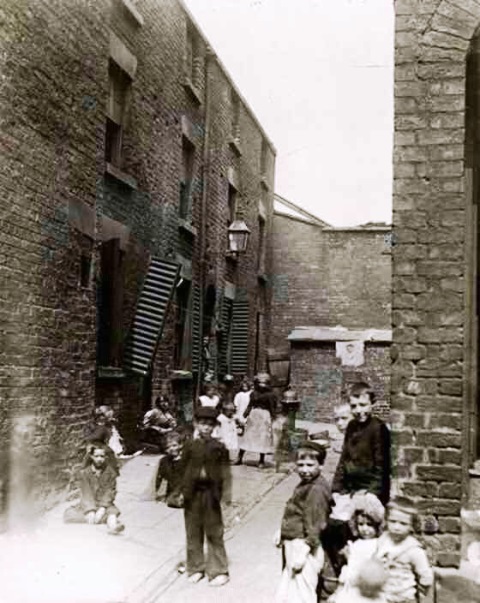TITHEBARN STREET OUTRAGE 1874 by shaun rothwell and john forrest, retired
TITHEBARN STREET OUTRAGE
August Bank Holiday 1874 had been a glorious summer’s day. In Liverpool like many places people were returning from a day’s outing. Richard Morgan, a 26 years old porter, and his wife Alice were returning from New Ferry Druids Gala on the Wirral to their home in Leeds Street. They had met Richard’s brother Samuel, a Carter, near to the Landing Stage and decided to have a drink in a public house on Chapel Street, just up from Liverpool’s Parish Church, St Nicholas.
After there drink they continued to walk along Tithebarn Street towards home. It was about half past nine when they walked past a public house on the corner of Lower Milk Street and Tithebarn Street, just past Exchange Railway Station. As they past they were jostled by 20 year old John McCrave, one of the notorious Cornermen, whose activities had caused terror in the Vauxhall area of Liverpool. McGrave asked Richard if he had six pence for a quarter pint. The road was one of Liverpool’s major thoroughfares and though it was late there quite a few people about. Richard asked McGrave if he had a job. Richard said if he, McGrave, was working ; He would not need to beg. Richard turned and started to walkway.
The Morgans were law abiding, working class, respectable citizens. Both the Morgan brothers were both physically strong and fit, working as a porter and a carter respectively.
Richard had taken no more than a few steps; when he was punched to the back of his head. The blow caused Richard to stumble and he ended up sprawled on the floor. Samuel attacked his brothers assailant. McGrave had been joined by 19 year old Patrick Campbell and 17 year old Michael Mullen. Both of whom were also members of the Cornermen.
Richard was still on the ground and being kicked. At this point Alice, Richard’s wife, jumped on one of her husband’s attackers. Alice was either kicked or punched in the head. The blow was so hard that she lost her hearing. The hearing loss would prove to be permanent.
Alice was screaming for the police. Her cries attracted the attention and brought people out of the pubs and also families from their homes. But instead of protecting Richard and his family, the newly assembled crowd encouraged the attack and some even joined in. At one stage seven people were kicking at Richard’s increasingly lifeless body, which was being “kicked like a ball”. Richard was now some 40ft down the street from where the attack started
It was 9.50pm by the time a policeman appeared. Cries of “Nix, nix” (meaning run away) rang out and the gang disappeared down Lower Milk Street. Richard had stopped moving. Richard’s brother Samuel chased after the group. After some time Samuel returned to the scene to find an onlooker trying to revive Robert with brandy. But it was all too late.
The police took control and Richard was taken to the North Dispensary in Vauxhall Road. He was pronounced dead on his arrival there. Three doctors who examined Morgan’s body found he had a heart defect it was not one that would cause death and they concluded that he had died from shock as a result of the beating. The coroner found his body shockingly cut and bruised. What appeared to be a stab wound was identified on the left side of his neck.
McGrave had left the scene as police arrived but he had crept back and was now a spectator amongst the crowd. But was identified as being one of the principal offenders and arrested. The other two were also in custody within days, Mullen having tried to escape to sea.
At the trial the Defence claimed that a verdict of manslaughter was more appropriate as there had been no premeditation. However all three, who showed a complete indifference to what was going on were found guilty of murder and sentenced to death, the jury having also been moved by a weeping Mrs Morgan giving evidence. Campbell was recommended for mercy on account of his having held steady employment for two years and having apparently not been a gang member, but rather an accessory as he was in a relationship with McCrave’s sister.
As McCrave was being led down from the Dock. He shouted to the public gallery that people should ‘keep from drink’. The Home Secretary was petitioned by the families of the guilty men petitioned for reprieves. Though amongst the general public few people supported them and there was a side petition calling for the gang members to be flogged to death but it received lukewarm support. It was not until two days before the execution that Campbell had his sentence commuted to life imprisonment, to the relief of his widowed mother who was a respectable shopkeeper.
McCrave and Mullen were hanged at Kirkdale on 3rd January 1875. McCrave, the gang ringleader displayed great terror at the end but Mullen remained calm and indifferent throughout.
The barbarity of the murder of Richard Morgan sparked a public debate about gangs and street violence. Unemployment, housing conditions, punishment, police inefficiency and lack of political will were identified as possible causes. The events in Liverpool were brought under a national gaze as newspapers’ editors ensured that every facet of the case was reported. They realised that crime sold more newspapers.
The ‘alleged’ inefficiency of Liverpool City Police was subject to a great debate. The Liverpool Watch Committee would be the arbitrator. John James Grieg was the Liverpool Head Constable at the time and would be the first to stand before the Watch Committee. Eventually the Officer on whose beat the murder occurred was questioned as to why there was no police presence at the scene for so long. He was able to satisfy the Watch Committee that he was working his beat as instructed. The Liverpool City Police operated a fixed beat system. This meant a beat Officer would be any point on his beat every 20 or 25 minutes.
The Tithebarn Street Outrage, as it became known, brought starkly to public attention the mobs of thugs who plagued Liverpool. At a time when the city was one of the world’s greatest and most prosperous seaports. The city’s darker side was now open to the world. As the gangs of Liverpool who had beset the city with their levels of violence emerged to take centre stage. Hibernians, the Dead Rabbits and the Finnon Haddie became household names as their levels of violence was reported. Though the most feared of all were the High Rip Gang infamous for Blackstone Street Murder. They terrorised the streets of the city centre as they fought a bitter war with their sworn enemies, the Logwood Gang.
The following is taken from a Daily Post editorial in 1886;
“The highest type of civilisation and the lowest type of savagery are to be found in Liverpool, existing side by side; and in no city in the world can a more startling contrast of the two races of mankind – the civilised and the uncivilised – be found.”
This comment was made some 12 years after the brutal murder of Richard Morgan on 3rd August 1874, labeled the “Tithebarn Street Outrage”.
Shaun R Rothwell – Merseyside Police (ret’d)
John Forrest – Merseyside Police (ret’d)
January 2014








